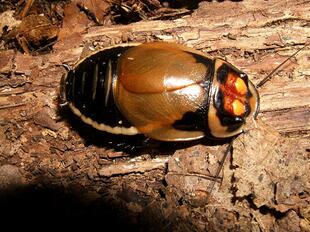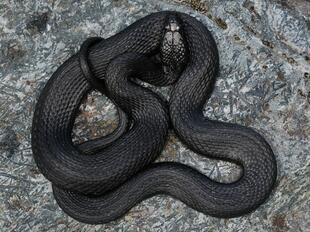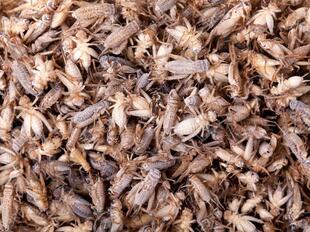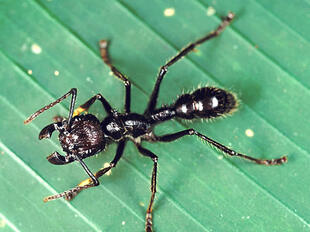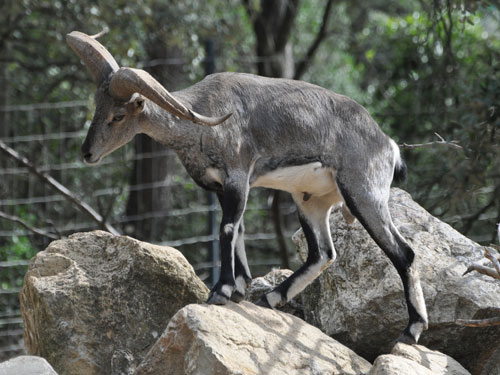
Bharal, or Himalayan blue sheep(Pseudois nayaur)
Phylum —chordata
Class — mammalia
Order — artiodactyla
Family — bovidae
Genus – pseudois
Appearance
This medium-sized sheep is from 115 to 165 cm (45 to 65 in) long along the head-and-body, with a tail of 10 to 20 cm (3.9 to 7.9 in). They are from 69 to 91 cm (27 to 36 in) high at the shoulder. Body mass can range from 35 to 75 kg (77 to 165 lb). Males are slightly larger than females.
The short, dense coat is grey in colour, sometimes with a bluish sheen. The underparts and backs of the legs are white, while the chest and fronts of the legs are black. Separating the grey back and white belly is a charcoal colored stripe. The ears are small, and the bridge of the nose is dark.
The horns appeared in both sexes and are ridged on the upper surface. On males` heads they grow upwards, then turn sideways and curve backward, looking somewhat like an upside-down mustache. They may grow to a length of 80 cm (31 in). On females` heads the horns are much shorter and straighter, growing up to 20 cm (7.9 in) long.
Habitat
Bharalare found in the high Himalayas of India, Nepal, Bhutan, Tibet, Myanmar, and Pakistan.
Behavior
Bharal are active throughout the day and spend their time feeding and resting on the grassy mountain slopes.
Due to their excellent camouflage and the absence of cover in their environment, bharal remain motionless when approached. Once they have been noticed, however, they scamper up to the precipitous cliffs, where they once again freeze, using camouflage to blend into the rock face.
Bharal are social animals and their herds usually range from 5 to 400 individuals. The size of the herd depends on the season, habitat condition, hunting pressure, and disturbance. Males may even sometimes gather in all-male herds or mix with family groups.
When being aggressive bharal will horn vegetation, jump, shake with their heads, jerk and lunge, butt, and clash among the members. Females may even bite each other.
Diet
Bharal are herbivores and feed on grass, herbs, shrubs, lichens, and mosses.
Reproduction
Little information is known about the mating system in bharal. The rutting season starts towards late November and continues until mid-January. During the rut, males use multiple strategies for mating, namely tending, blocking, and coursing. The gestation period lasts around 160 days after which a single kid is born. Twins are born rarely. Young are usually weaned at 6 months of age and reach reproductive maturity when they are 1,5 years old.
In captivity
Record longevity in captivity is 20.9 years.
They are kept in aviaries, which are should be located on high ground along the stream and made on the principle of mountainous terrain: boulders are laid in a cascade. All aviaries must be equipped with automatic watering systems. Grids are replaced with lightweight ones. As a security system, an electric shepherd and a strip of bushes along the fence are used.
Bharal is a herbivore. He eats grass, hay, and cereals. In winter, rams are fed with hay and grain. In the spring, they graze on pastures.
 Russian
Russian
 English
English




















